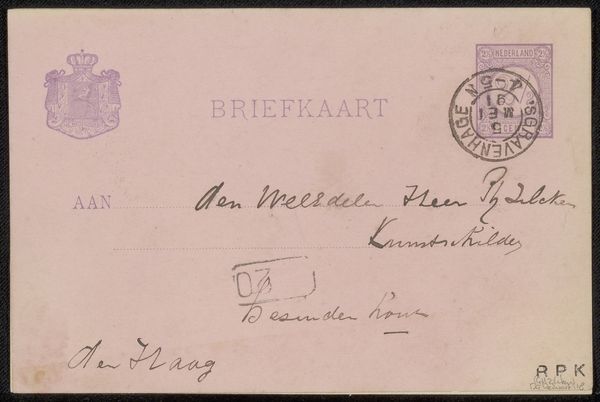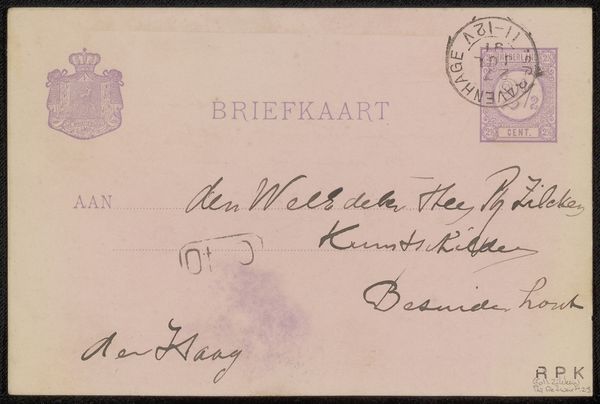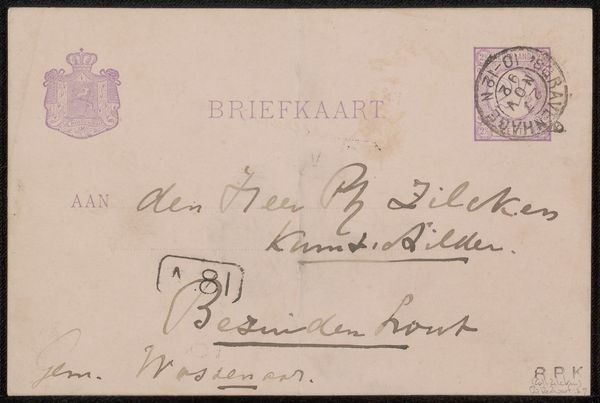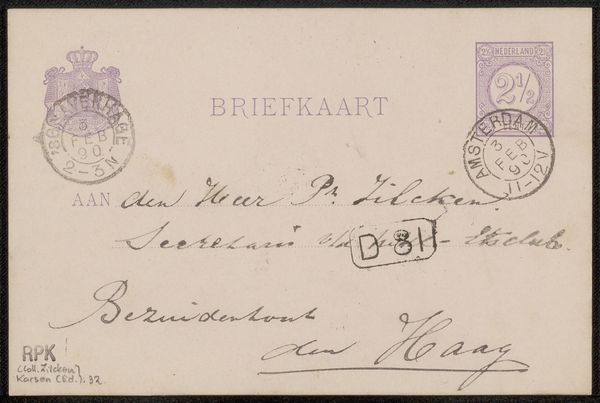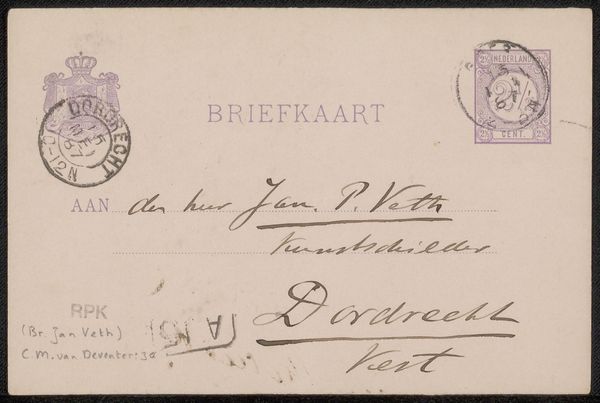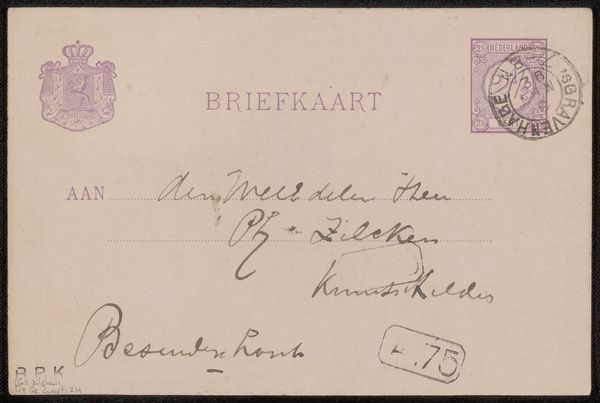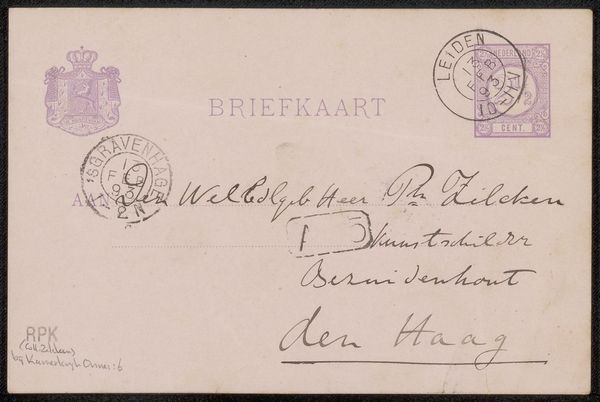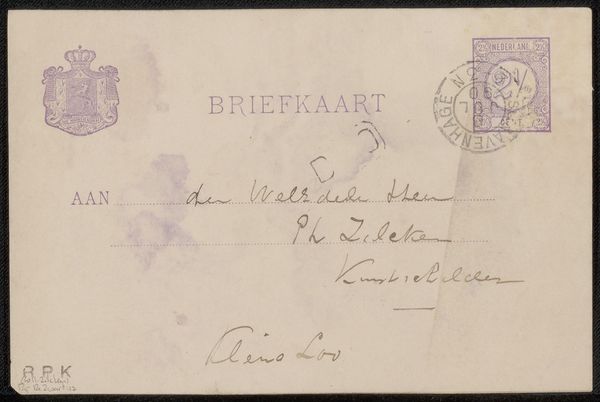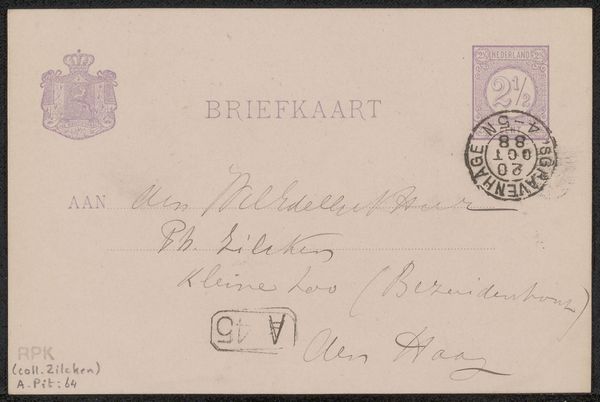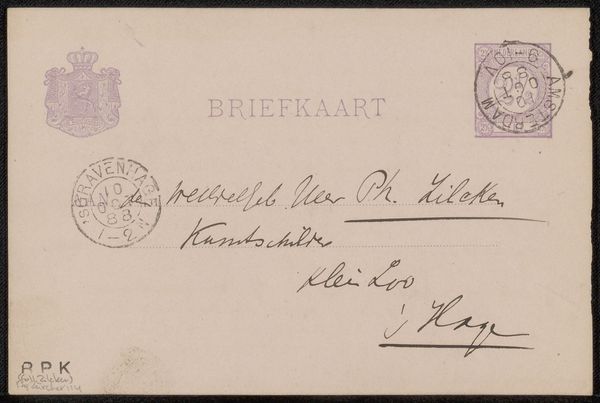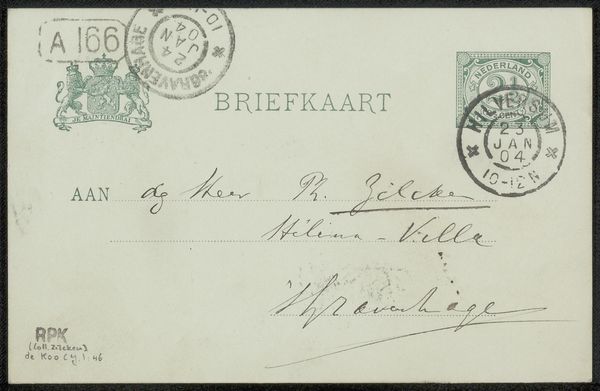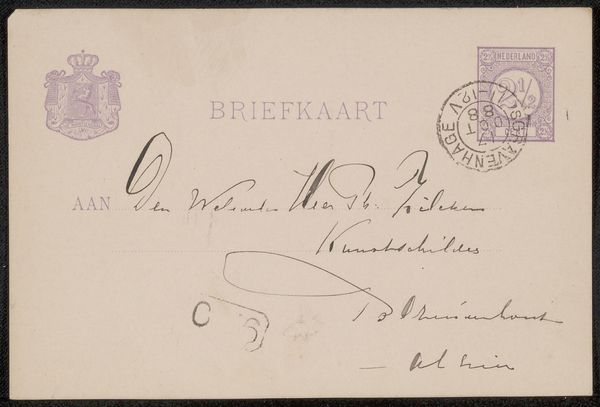
drawing, photography, ink, pen
#
drawing
#
still-life-photography
#
hand-lettering
#
hand drawn type
#
hand lettering
#
photography
#
personal sketchbook
#
ink
#
hand-drawn typeface
#
ink drawing experimentation
#
pen-ink sketch
#
pen work
#
sketchbook drawing
#
pen
#
sketchbook art
Copyright: Rijks Museum: Open Domain
Curator: So, what's capturing your attention today? Editor: We’re looking at "Briefkaart aan Philip Zilcken" by Willem de Zwart, potentially from around 1891-1896. It appears to be a postcard featuring pen, ink, and photography. There's something about the intimacy of it, like glimpsing a personal message. How do you interpret this work beyond its face value? Curator: It's more than just a greeting; it’s a peek into a social network and the exchange of ideas. Think about the late 19th century, the rise of postal services, and how these relatively new forms of communication impacted social interaction and the art world specifically. Who were Willem de Zwart and Philip Zilcken? What circles did they run in? This card likely served a function within that context, perhaps related to artistic collaboration or networking. How might the postal system, with its implied censorship, affect how and what people wrote? Editor: That's interesting. It highlights the sociopolitical aspect of communication in that era. Was this card possibly a form of resistance or a safe way of communicating complex ideas, disguised within a seemingly simple message? Curator: Absolutely. The limitations themselves can inspire creativity and coded communication. Consider the careful penmanship; is that performative in any way, an indication of status or education? And what does the use of Dutch tell us? It's important to dig into the background and intent and see how art facilitates interactions that are beyond just social convention. Editor: I never thought of a postcard holding such complex layers of social meaning. Thanks for bringing that to light. Curator: It's through understanding the intersection of art and daily life that we uncover these fascinating stories. Looking at art as evidence and intervention can open our understanding to marginalized people in history.
Comments
No comments
Be the first to comment and join the conversation on the ultimate creative platform.
